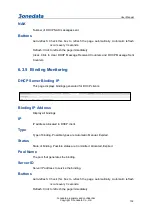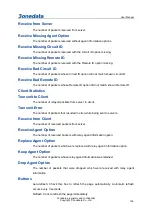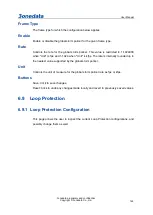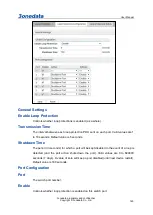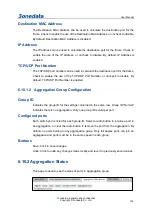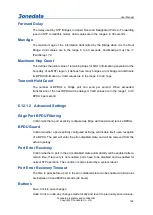
User Manual
3onedata proprietary and confidential
Copyright © 3onedata Co., Ltd.
146
Neighbor entries were last changed
Shows the time when the last entry was last deleted or added. It also shows the time
elapsed since the last change was detected.
Total Neighbors Entries Added
Shows the number of new entries added since switch reboot.
Total Neighbors Entries Deleted
Shows the number of new entries deleted since switch reboot.
Total Neighbors Entries Dropped
Shows the number of LLDP frames dropped due to the entry table being full.
Total Neighbors Entries Aged Out
Shows the number of entries deleted due to Time-To-Live expiring.
Local Counters
The displayed table contains a row for each interface. The columns hold the following
information:
Local Interface
The interface on which LLDP frames are received or transmitted.
Tx Frames
The number of LLDP frames transmitted on the interface.
Rx Frames
The number of LLDP frames received on the interface.
Rx Errors
The number of received LLDP frames containing some kind of error.
Frames Discarded
If a LLDP frame is received on a interface, and the switch's internal table has run full,
the LLDP frame is counted and discarded. This situation is known as "Too Many
Neighbors" in the LLDP standard. LLDP frames require a new entry in the table when
the Chassis ID or Remote Port ID is not already contained within the table. Entries are
removed from the table when a given interface's link is down, an LLDP shutdown frame
is received, or when the entry ages out.
TLVs Discarded
Each LLDP frame can contain multiple pieces of information, known as TLVs (TLV is
short for "Type Length Value"). If a TLV is malformed, it is counted and discarded.

